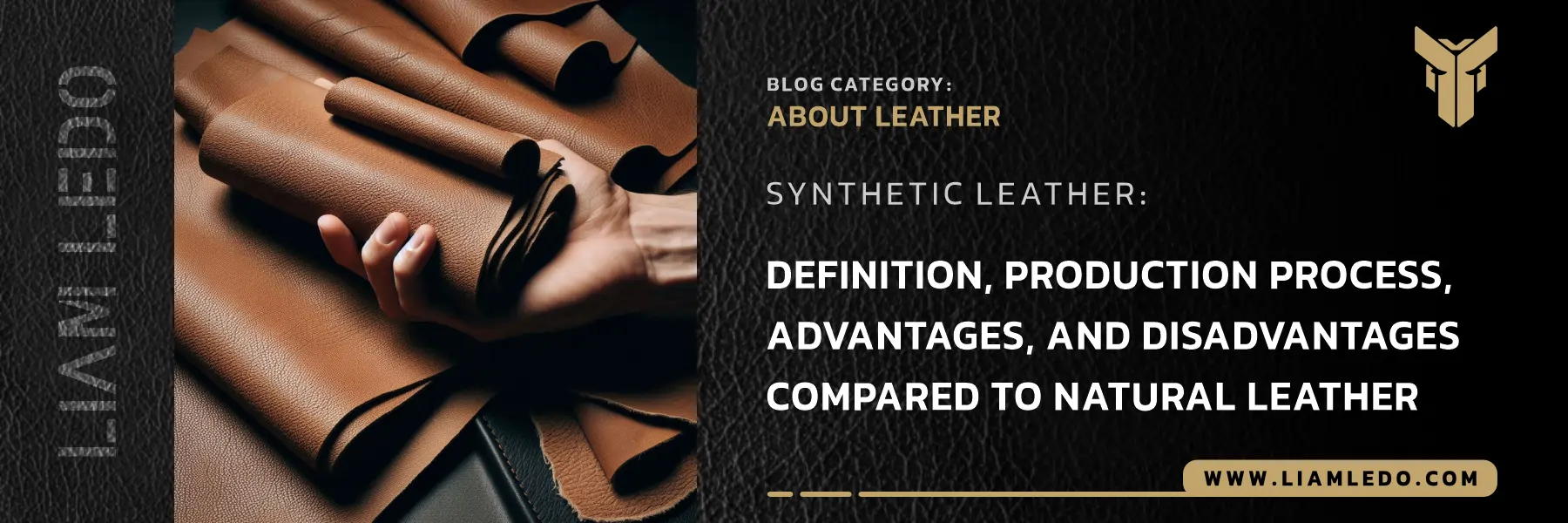
What Is Synthetic Leather? Synthetic leather, also known as faux leather, artificial leather, industrial leather, or vegan leather, is a man-made material designed to mimic the appearance and texture of genuine leather. It is widely used in the manufacturing of clothing, bags, shoes, car interiors, and furniture due to its affordability, design flexibility, and resistance to moisture.
Learn more about leather and make better choices:

How Synthetic Leather Is Made?
The production process of synthetic leather involves several stages, each contributing to its final look and performance. Here’s a step-by-step overview:
- Selection of Raw Materials: Synthetic leather is made using two main components: a base layer and a surface layer. The base is typically formed from polyurethane (PU) or polyvinyl chloride (PVC) foams, while the top layer—responsible for texture and finish—is created using polymers like PU or PVC.
- Base Layer Preparation: The foam base is processed into thin, uniform sheets. These layers serve as the structural support of the synthetic leather and determine its flexibility and strength.
- Top Layer Application: The polymer top layer is applied using techniques like spraying, coating, or printing. This layer gives synthetic leather its texture, color, and water-resistant properties.
- Drying and Stabilization: After application, the materials undergo drying and chemical stabilization to enhance durability and ensure proper bonding between layers.
- Final Finishing: In the final stage, synthetic leather is treated with finishes such as embossing, dyeing, or adding surface patterns to closely replicate the look and feel of real leather.

Pros and Cons of Synthetic Leather vs Real Leather:
If you’re wondering whether synthetic leather is better than real leather, here are the key benefits and drawbacks:
Advantages:
- Design Versatility: Thanks to its plastic-based composition, synthetic leather is available in a wide range of textures, colors, and finishes, far beyond the limitations of natural leather.
- Affordability: One of the main reasons people choose synthetic leather is its significantly lower price compared to genuine leather. It provides a cost-effective alternative for fashion and upholstery.
- Water Resistance: Synthetic leather is naturally resistant to water and moisture, making it ideal for rainy or humid environments.
- Easy Maintenance: It is stain-resistant and easy to clean using standard detergents, unlike real leather which requires special care products.
- Animal-Friendly: As it contains no animal hides, synthetic leather is a popular choice for environmentally-conscious and vegan consumers.
Disadvantages:
- Lower Breathability: Because it lacks the porous nature of real leather, synthetic leather can trap heat and feel less breathable—especially in clothing or seating.
- Less Natural Feel: Many users find faux leather less soft and supple than real leather, with a more plastic-like touch.
- Durability Limitations: While resistant to scratches and moisture, synthetic leather may crack or peel over time and doesn’t age as gracefully as genuine leather.
- Difficult to Repair: Damage to synthetic leather is harder to fix. Often, the entire surface or product must be replaced.
- Chemical Smell: Some synthetic leathers may emit a strong odor due to the chemical processes used in their production.
Best Use Cases for Synthetic Leather:
Synthetic leather is highly suited for:
- Furniture (e.g., sofas, office chairs)
- Shoes and Bags
- Automotive Upholstery
- Rainwear and Accessories
Its wide application range is a testament to its affordability and aesthetic flexibility.

Conclusion:
So, what is synthetic leather really good for? As a budget-friendly, water-resistant, and ethical alternative to natural leather, it offers great value in fashion, furniture, and accessories. However, if you’re seeking long-term durability, breathability, and a natural aging process, real leather still holds the edge.
Whether you’re buying a faux leather sofa or a pair of stylish boots, knowing the pros and cons of synthetic leather will help you make a smart, informed decision.
Source: The Gentleman’s Gazette | Wikipedia







